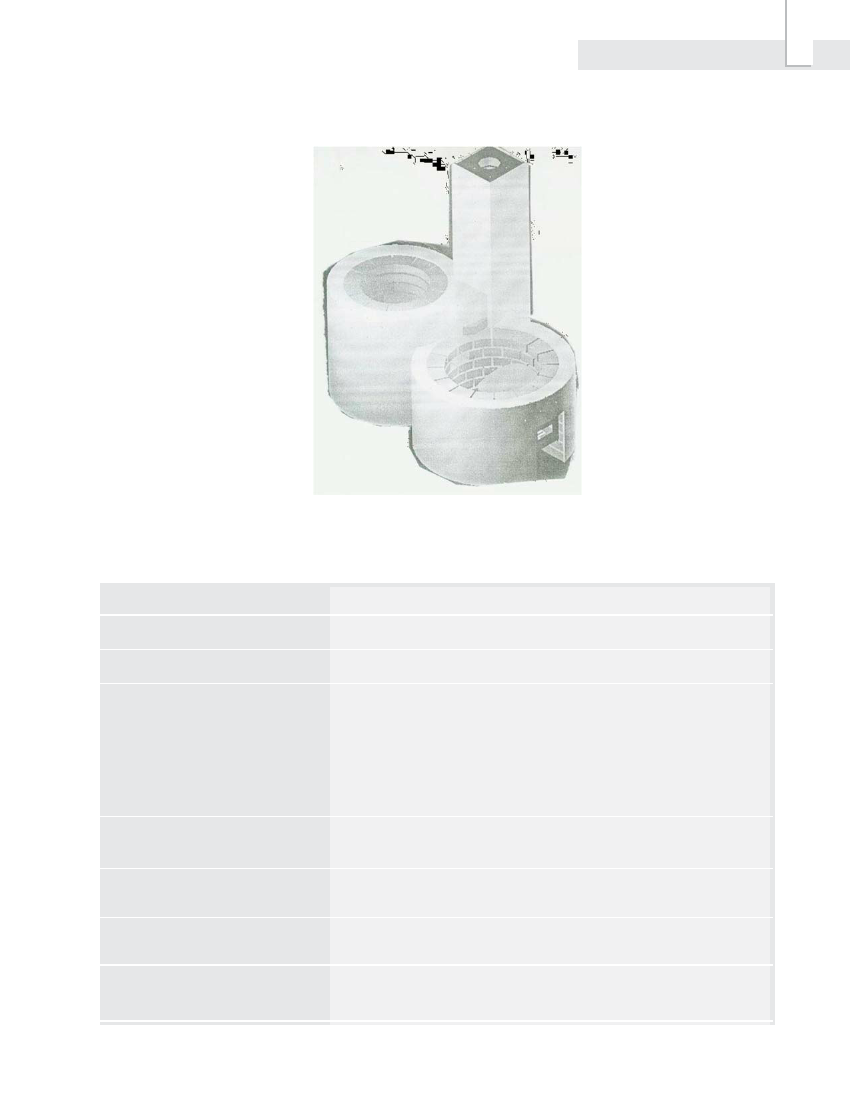
3.2.6 ESAP model institutional ICS
Inventory of Innovative Indoor Smoke
Alleviating Technologies in Nepal
19
Photograph 3.2: Two potholes IICS
Source: AEPC
Year of dissemination
Cost
Quantity disseminated
Technological description
Disseminated regions
Advantages
Disadvantages
2004 onwards
NRs.7000
175
This stove is made of special mud-brick iron pot rings on both potholes
constructed to fit the cauldron tightly. The diameter of first and second
pothole is 56 and 33 cm respectively. About 80 per cent heat is produced
in the first hole while remaining 20 per cent is produced in second one.
The height of the chimney is 2.4 to 2.7 m. It has a grate on the fuel bed
and a gate at fuel entrance made of mild steel. The gate is used to
regulate the draught and air supply for efficient combustion.
In four pilot district schools - Jajarkot, Surkhet, Salyan and Makawanpur
which have a day-meal feeding programmes.
High efficiency and fuel saving. Fire can be extinguished whenever
needed.
High cost and unavailability in the market. Single pot cooking is expensive.
Major organisations involved in Disseminated by AEPC/ESAP through CRT/N, Sundar Nepal Sanstha and
promotion/dissemination
other local NGOs in Surkhet, Jajarkot, Salyan and Makawanpur.